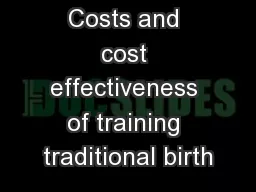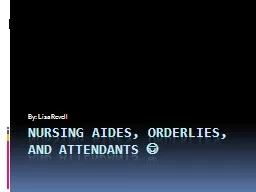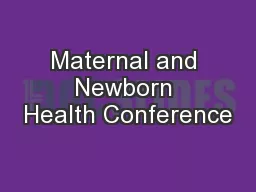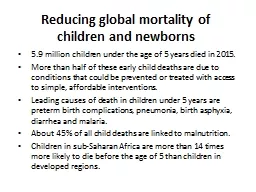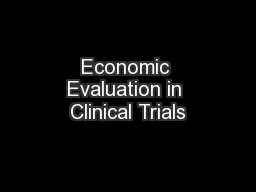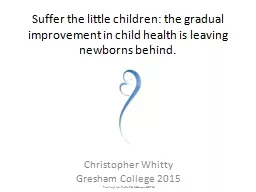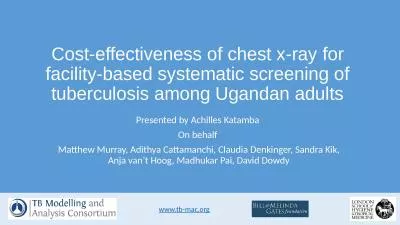PPT-Costs and cost effectiveness of training traditional birth attendants to reduce neonatal
Author : mitsue-stanley | Published Date : 2019-06-24
lufwanyama neonatal survival study Christopher J Gill MD MS Center for Global Health and Development Department of International Health Boston University School
Presentation Embed Code
Download Presentation
Download Presentation The PPT/PDF document "Costs and cost effectiveness of training..." is the property of its rightful owner. Permission is granted to download and print the materials on this website for personal, non-commercial use only, and to display it on your personal computer provided you do not modify the materials and that you retain all copyright notices contained in the materials. By downloading content from our website, you accept the terms of this agreement.
Costs and cost effectiveness of training traditional birth attendants to reduce neonatal: Transcript
Download Rules Of Document
"Costs and cost effectiveness of training traditional birth attendants to reduce neonatal"The content belongs to its owner. You may download and print it for personal use, without modification, and keep all copyright notices. By downloading, you agree to these terms.
Related Documents


